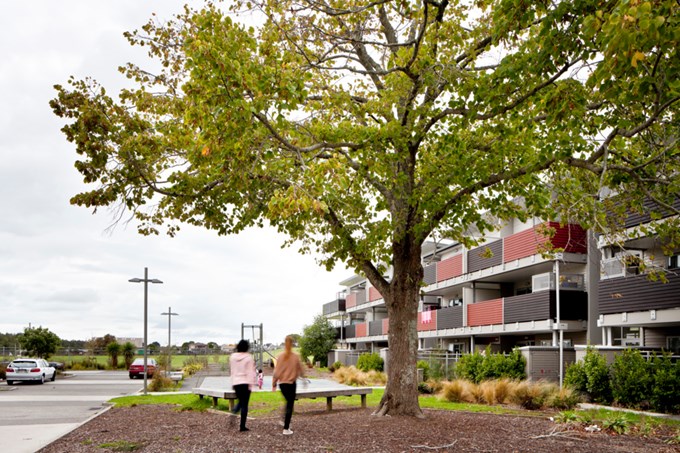Auckland Council is committed to protect and enhance our urban forests with actions to sustainably grow the size of our tree canopy across our city.
Auckland Council’s Chief Sustainability Officer, John Mauro, says that rapidly growing international cities are always under pressure to protect their natural environment, and Auckland is no exception.
“A healthy urban ngahere (forest) enriches our communities, our local economies and our natural environment. Auckland cannot become a world-class city without a great urban forest.”
“Whether you are from Takanini or Takapuna, Herne Bay or Henderson, trees are valuable to all of us. They clean our air and stormwater, cool and beautify our urban spaces and bring nature to our doorsteps.”
“Some of the key challenges to our urban forest that we are monitoring include; population growth and urbanisation, ongoing issues with weed and pest control, diseases such as kauri dieback and myrtle rust and factors caused by climate change."
Waitematā Local Board tree loss
“The latest report into Waitematā Local Board tree loss gives us further information about what has occurred during the 10 year period of 2006 – 2016 in a specific local area of Auckland. It specifically focuses on tree loss only, the report did not consider the tree growth that has occurred in the area. We need to consider tree growth during this timeframe to understand the full situation.”
“We can see that tree loss is most significantly from private land, making up 65 per cent of total canopy loss, compared to 16 per cent tree loss from public parkland.”
“We can also see that, of the 65 per cent tree loss from private land, 57 per cent of that total loss is the combined result of small-scale tree loss from many thousands of individual locations and not wholesale tree canopy loss in a single location.”
“We also know that changes made to the Resource Management Act in 2012 have also prevented the use of general, or blanket, tree protections. This means councils have limited ability to impose rules for the removal of urban trees.”
“This makes creating and protecting urban trees and vegetation – our urban ngahere – increasingly essential to counteract the pressures and impacts of these changes to maintain a quality, healthy and people-friendly urban environment,” he says.
The vast majority of tree clearances were quite small in terms of the quantity of canopy removed at a single location.
Auckland urban ngahere (forest) strategy
Auckland Council’s Urban Forest Strategy is a comprehensive regulatory and non-regulatory approach to enhancing our urban forest and green infrastructure by increasing the tree canopy cover around the city.
As part of the implementation framework, 18 high-level actions have been identified grouped under three themes:
- Knowing – access to better data and understanding
- Growing – increasing canopy and leveraging partnerships
- Protecting – direct and indirect ways to better protect trees.
The strategy provides an important tool to ensure we are all working towards the same common goal.
Most importantly, it is a vision and mechanism to protect and grow the benefits of our urban ngahere for future generations.
A key target of the strategy is to increase canopy cover across Auckland’s urban area up to 30 per cent, with no local board areas less than 15 per cent.
In addition, the government is also currently working on a two-stage reform of the Resource Management Act and we look forward to working closely with them as that work is progressed.
Tree plantings underway across Auckland
Auckland Council’s efforts to grow our tree canopy include planting initiatives with local boards, iwi, schools, service and social sector groups, private entities, farmers, New Zealand Transport Association and developers.
Mayor Phil Goff’s Million Trees project is well on the way to being achieved, with 750,000 of the one million trees already in the ground. This year alone has seen 500,000 trees planted, providing additional positive growth.
Other initiatives will enhance our existing tree canopy and protect it from threats. The Mayoral Conservation Awards recognise the outstanding efforts by groups and individuals to protect our environment, including protecting our threatened native tree species and their habitats.
Auckland Council’s natural environmental targeted rate is an additional $311 million fund over the next 10 years aimed at protecting and tackling the pests, weeds and diseases that are threatening our native flora and fauna.
What is Auckland’s urban ngahere?
Auckland’s urban ngahere is defined as the network of all trees, other vegetation and green roofs – both native and naturalised – in existing and future urban areas. It includes trees and shrubs in road corridors, parks and open spaces, green assets used for stormwater management, community gardens, green walls and roofs, and trees and plants in the gardens of private properties.
The urban ngahere, like the pōhutukawa trees fringing Auckland’s coastline, are an important part of Auckland’s identity and natural heritage. Trees are also important to our heritage places and areas, such as Albert Park, Western Park and Myers Park. The ngahere form an important part of Auckland’s cultural heritage, and represent landing places of waka (canoe) and birth whenua (to Māori, it is customary to bury the whenua or placenta in the earth, to return it to the land).
It is important to recognise the urban ngahere as more than just trees and shrubs: it captures the interconnected whakapapa (genealogy) of all living things to the wider ecosystem, including the water, soil, air and sunlight that support it.
What are the benefits of a healthy urban ngahere?
A healthy urban ngahere is critical for a city to achieve and enhance environmental, economic and social outcomes. The benefits of urban trees include:
- improved water and air quality
- enhanced stormwater management
- enhanced biodiversity
- better health and wellbeing for people
- removal of carbon from the atmosphere
- reduced urban heat island effect
- reduced energy costs
- creation of cultural connections to place and history
- opportunities for nature-based recreation.


